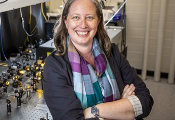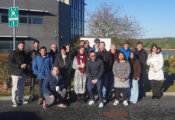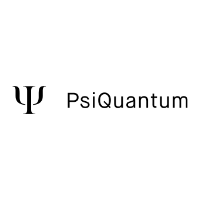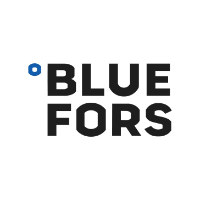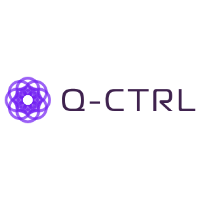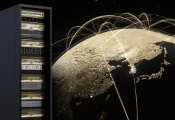World’s First Successful Demonstration of Quantum Key Distribution Technology for Multiplexing Over 30 Tbps of High-Capacity Data and Secret Keys
March 26, 2025 -- KDDI Research, Inc. (“KDDI Research”), and Toshiba Digital Solutions Corporation (“Toshiba Digital Solutions”) have developed a multiplexing technology for quantum key distribution (QKD) that is theoretically impossible to eavesdrop. This technology assigns secret keys to the C-band and high-volume data signals to the O-band, enabling multiplexed transmission over a single optical fiber. Furthermore, utilizing this technology, we have successfully transmitted secret keys and high-capacity data signals at 33.4 Tbps over 80 km for the first time.
To date, commercial solutions utilizing QKD have focused on technology that enables the transmission of data and secret keys over a single optical fiber. This approach eliminates the need for dedicated fibers for key transmission. However, data transmission interferes with the secret keys by generating noise, making it challenging to transmit high-capacity data. With this new technology, it is possible to achieve higher-capacity communication through a single optical fiber than ever before, significantly reducing the introduction and operational costs of applying QKD technology. This advancement is expected to lead to early practical applications in inter-data center communications and beyond.
This achievement will be presented as a technical paper at OFC 2025 (Optical Fiber Communication Conference and Exposition), the world’s largest international conference on optical communication technology, to be held from March 30 to April 3, 2025, in San Francisco.
As data center communications continue to grow in capacity, the importance of security measures to protect sensitive information from cyberattacks is becoming increasingly critical. KDDI Research and Toshiba Digital Solutions will continue to advance research and development aimed at realizing high-capacity and secure communication services.
Background
In the 6G era, the proliferation of AI and IoT is expected to lead to an immense and diverse flow of data across networks, making it essential to further increase the transmission capacity of optical fiber communication to support these networks. Additionally, the transmission of highly sensitive information, such as biometric data used in various authentication methods and genomic information necessary for personalized medicine, is anticipated to rise in the future, creating a demand for high-capacity and secure data communication services. Currently, cryptography based on computational difficulty is employed to protect transmitted data from cyberattacks; however, there are concerns that quantum computers may be able to decrypt this information in the future.
As a result, QKD technology, which delivers secure transmission of secret keys, is gaining commercial traction. QKD leverages the principles of quantum mechanics, which state that any attempt to eavesdrop will inevitably alter the quantum state, making it possible to detect eavesdropping. This ensures that the theft of secret keys and the decryption of encrypted data are theoretically impossible, thereby guaranteeing security.
However, QKD technology that utilizes weak light are susceptible to noise generated by nearby wavelengths of light. Consequently, dedicated optical fibers are required for transmitting secret keys utilizing QKD, which poses challenges in terms of implementation and operational costs. To address this issue, research is being conducted on technologies that multiplex secret keys and data signals over a single optical fiber utilizing different wavelengths. However, achieving both high-capacity data transmission and long-distance communication has proven difficult. Increasing the capacity of data transmission amplifies the noise affecting the secret keys transmitted utilizing the conventional QKD technology, while extending the distance exacerbates the impact of noise on the secret keys.
Furthermore, KDDI Research has been developing technologies to transmit high-capacity data not only in the widely used C-band and L-band but also in the ultra-wideband O-band.
Recent Achievements
In this project, KDDI Research and Toshiba Digital Solutions analyzed and evaluated the impact of data signals transmitted in the O-band on the secret keys transmitted utilizing the QKD method in the C-band. The parameters necessary to optimize the optical power and bandwidth for O-band transmission were identified. As a result, secret keys were successfully multiplexed, and experienced minimal transmission loss in the C-band, with high-capacity data signals transmitted over the ultra-wide O-band. This enabled the transmission of both the secret keys and high-capacity data signals at 33.4 Tbps over 80 km utilizing a single optical fiber.
This breakthrough increased the transmission capacity to approximately three times compared to conventional technology. Additionally, it enhanced the transmission performance index by approximately 2.4 times, measured as the product of transmission capacity and distance (capacity-distance product), compared to conventional technology that multiplexes both secret keys and data signals in the C-band.





